Spicebush Swallowtail Caterpillar
I’ve written about our remarkable caterpillars before, but so many interesting ones inhabit our hills that another look is warranted.
Evolution drives innovation and the incredible diversity of caterpillars affirms this. I’ve written about our remarkable caterpillars before, but so many interesting ones inhabit our hills that another look is warranted.
Caterpillars have evolved to look and behave the way they do, largely because of predation. Songbirds, with their keen eyes, are major caterpillar predators, so survival of the fittest favours caterpillars that can fool birds.
A wonderful caterpillar that lives in southern Ontario is the spicebush swallowtail. Like many caterpillars it has an array of defences but is best known for its resemblance to a snake. It displays false eye spots – “snake eyes” at the front of its snake-like body. The caterpillar’s ruse is enhanced by behaviour. Prod one and it will rear up in a menacing snake-like posture.
Of interest is that none of the snake species that live in Ontario are predators of adult birds. Most of our snakes hunt on the ground and only one or two species climb trees to feed on nestling birds. So why would the spicebush caterpillar’s snake mimicry work?
To find the answer we need to visit the tropics, where snakes, such as the eyelash vipers of Central and South America, wrap themselves around tree limbs to ambush unwary birds.
So a fascinating aspect then of the spicebush swallowtail’s fakery is that it mimics snakes that live thousands of kilometres away. Why does this work? Because most of our songbirds spend about half the year in the south. When they migrate to Canada in the spring they pack a menacing visual memory of a tropical threat.
Other caterpillars mimic more ordinary things – leaves for example. I’ve included images of two caterpillars that have evolved to mimic dead or dying portions of leaves. Not as exotic as a snake ruse, but awe-inspiring nonetheless!
Related Stories
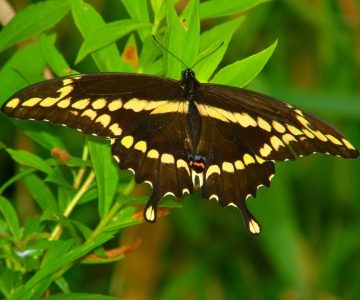
Giant Swallowtail Butterflies
Aug 9, 2012 | | Notes from the WildGiant swallowtail caterpillars are branded as “orange dogs” in the American south because they eat the foliage of citrus crops including orange trees.
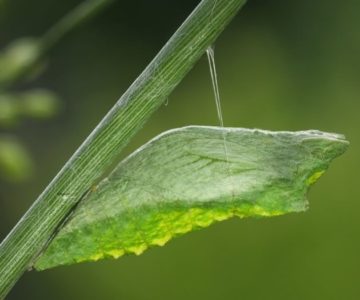
Chrysalides
Jul 4, 2017 | | Notes from the WildWith a few exceptions, chrysalides are designed to be overlooked, to allow the wondrous alchemy of metamorphosis to proceed undisturbed.
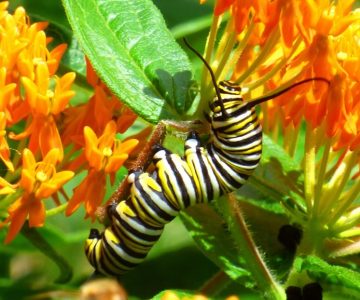
Caterpillars and Chrysalides
Aug 17, 2017 | | Notes from the WildCaterpillar food plants will summon egg-laying female butterflies to your yard. Then, if sharp-eyed, you may find the minute eggs. More likely you’ll find the caterpillars.
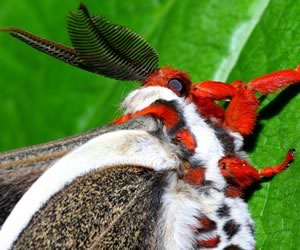
Underwing Moths
Aug 9, 2010 | | Notes from the WildNighttime flyers with a sweet tooth! (ironic considering they have no teeth at all!). If you plan to host a dinner party for them, a mélange of sugary foods and alcohol is called for.
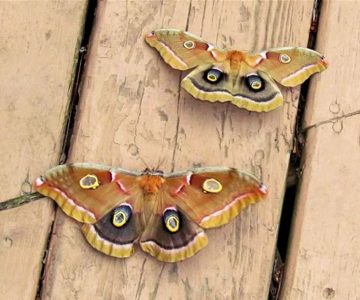
Polyphemus Moths
Jun 24, 2012 | | Notes from the WildMoth communication hints at the wealth of cryptic messaging all around us.
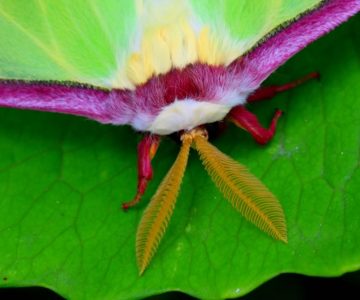
Luna Moths
Jun 8, 2011 | | Notes from the WildIf you have seen a luna moth recently in Headwaters please let us know.



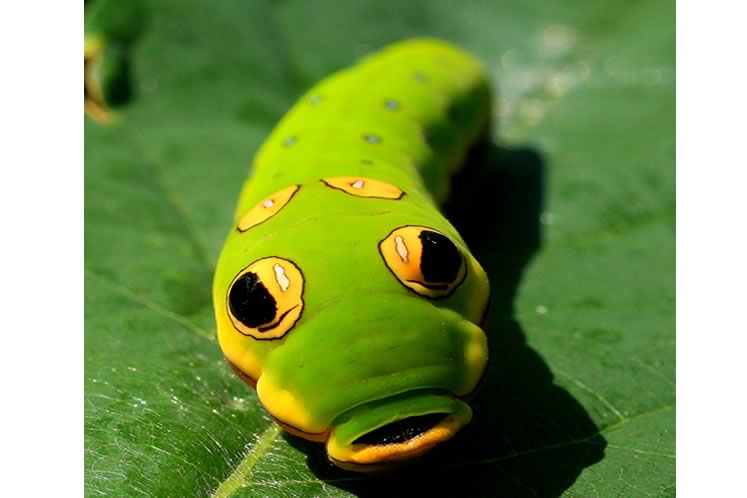
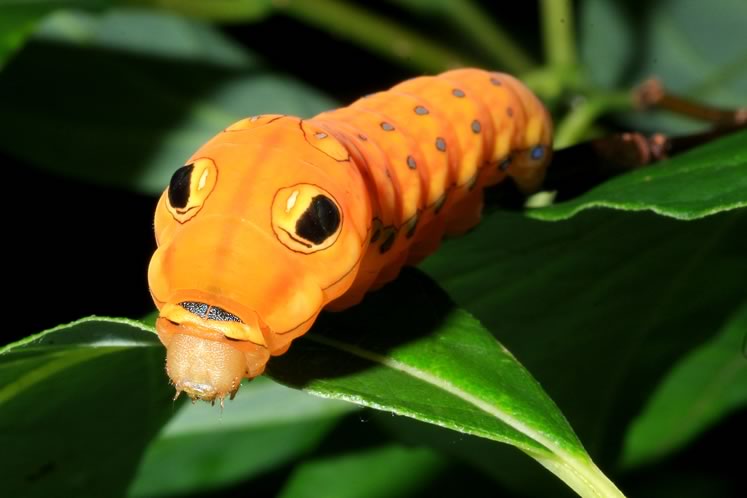
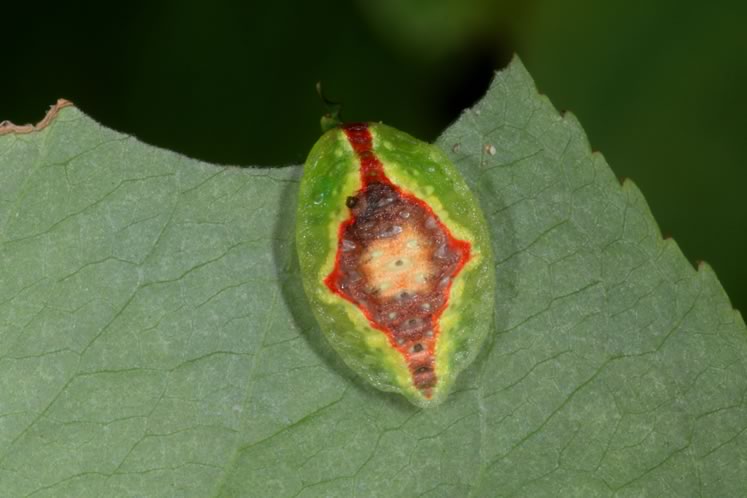
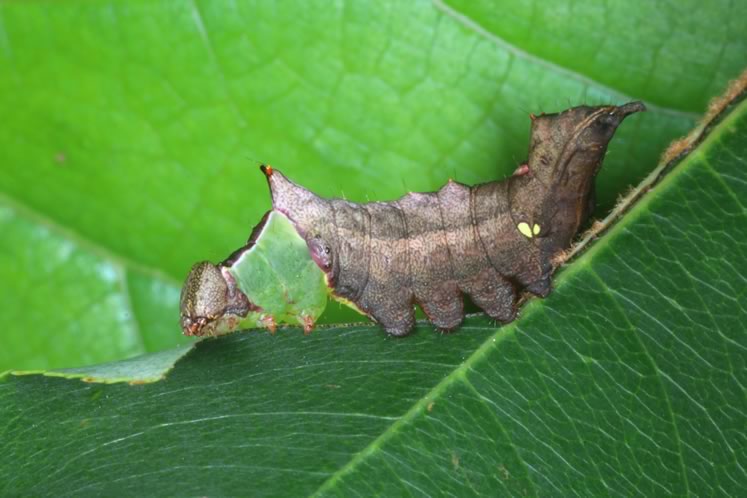






Good to hear from the fine state of South Carolina! These are among the most marvelous of caterpillars! You’re far enough south to also have a closely related species called the Palamedes Swallowtail. The larvae of the two are very similar. The Palamedes caterpillars feed on redbay and swampbay and perhaps on sassafras which is a favourite of the spicebush caterpillar too.
Don Scallen on Sep 15, 2019 at 3:05 pm |
Witnessed a Spicebush Swallowtail Caterpillar in my yard. I live in Bluffton, South Carolina. 8 Miles from the Georgia borderline.
David DeLaRosa from bluffton,sc on Sep 15, 2019 at 9:19 am |